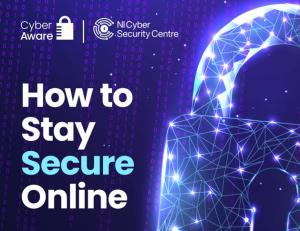Published date:

October is traditionally associated with half-term break, Halloween events and pumpkin spices. It is also an important month to promote as “Cyber Security Awareness Month” around the world. Do you think hackers and criminals just spend October on carving pumpkins or dressing up for Halloween? They will never stop trying to find ways to steal your valuable online assets!
This year’s Cyber Security Awareness Month campaign theme is about “See yourself in Cyber” — demonstrating that while cyber security may seem like a complex subject, ultimately, it’s really all about people. This October will focus on the “people” part of cyber security, providing information and resources to ensure everyone makes smart decisions whether at work or at home.
Each week we will publish some key actions to help protect your cyber-self.
Week 1: Enable Multi-Factor Authentication (MFA)
Introduction
Multi Factor Authentication, sometimes called MFA, Two-FA, 2-FA, gives you that extra layer of defense. It makes stealing your information harder for the average criminal.
So what is Multi Factor Authentication?
It is a security measure that requires anyone logging into an account to navigate a two-step process to prove their identity.
The two-step process makes it harder for criminals to access an online accounts; your personal emails, online accounts, banking applications etc.
Remember, always turn MFA on when it’s available because it’s easy to do and greatly increases your security.
How does MFA work?
By adding one simple step when logging into an account, multi-factor authentication greatly increases the security of your account. Here’s how it works.
1st step - is giving your password or passphrase.
2nd step - is to provide an extra way of proving that you’re you, like entering a PIN code or texting/emailing a code to your mobile device, or accessing an authenticator app.
Multi Factor Authentication can include:
- An extra PIN
- Additional code either emailed to an account or texted to a mobile number
- A unique number generated by an “Authenticator App”
- A biometric identifier like facial recognition or fingerprint
What’s type of Accounts offer MFA?
Not every account or platform offers MFA, but it’s becoming more popular every day. It’s seen on many accounts that usually hold either valuable financial or personal information like banks, financial institutions, online stores, or social media platforms.
Any place online that is storing your personal information, or any account that can be compromised and used to trick or defraud someone else should be protected with Multi-Factor Authentication.
Come back next week for our second tip on protecting your cyber-self.
For further information please visit StaySafeOnline or National Cyber Security Centre (NCSC)
Information adopted from National Cybersecurity Alliance – Cybersecurity Awareness Month